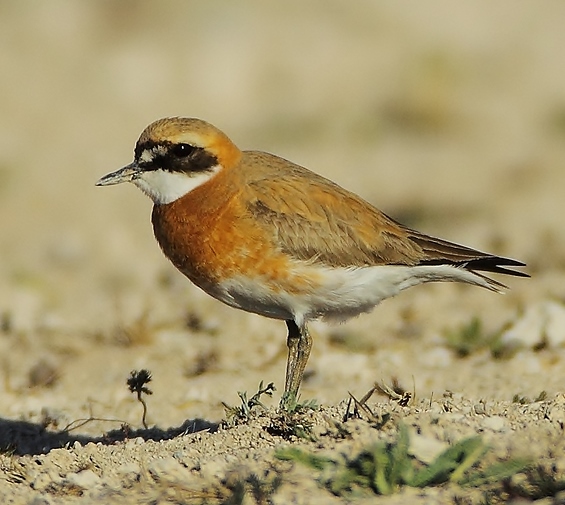 |
| Photo by Ahmet Karatash (Trek Nature) |
Common name:
greater sand plover (en); borrelho-grande-do-deserto (pt); pluvier de Leschenault (fr); chorlitejo mongol grande (es); wüstenregenpfeifer (de)
Taxonomy:
Order Charadriiformes
Family Charadriidae
Range:
This species breeds in central Asia, from Mongolia, southern Russia and northern China, west through southern Kazakhstan, Uzbekistan and Turkmenistan, and into the Caucasus. There are also some isolated breeding population in Turkey and Jordan. They migrate south and south-west to winter along the coasts of southern Asia, Australia, eastern Africa, and also along the Mediterranean coasts of Libya, Egypt and Israel.
Size:
These birds are 22-25 cm long and weigh 70-105 g.
Habitat:
Greater sand plovers breed in open deserts or semi-arid areas with sparse vegetation, grasslands, steppes and in seasonal saline, brackish or alkaline lakes and flats. Outside the breeding season they are mostly found in sandy or muddy intertidal flats, in coastal lagoons and estuaries, sand dunes, rocky coastal areas and tide pools. They are present from sea level up to an altitude of 3.000 m.
Diet:
During the breeding season they feed on terrestrial insects and their larvae, including midges, ants, beetles and termites, also being known to occasionally eat small vertebrates such as lizards. Outside the breeding season they feed mainly on marine invertebrates, including snails, worms, small crabs and shrimps, also eating some adult and larval insects.
Breeding:
The greater sand plover breeds in April-July. The nest is a shallow scrape on the ground lined with a thin layer of plant material. It is placed in an area of sand, gravel or other barren site. There the female lays 3-4 cream to light brown eggs with darker spots. The eggs are incubated by both parents for 24 days. The chicks leave the nest soon after hatching, but rely on their parent for brooding and protection for about 30 days.
Conservation:
IUCN status – LC (Least Concern)
This species has a very large breeding range and the global population is estimated at 180.000-360.000. The population trend is difficult to determine because of uncertainty over the impacts of habitat modification on population sizes.







